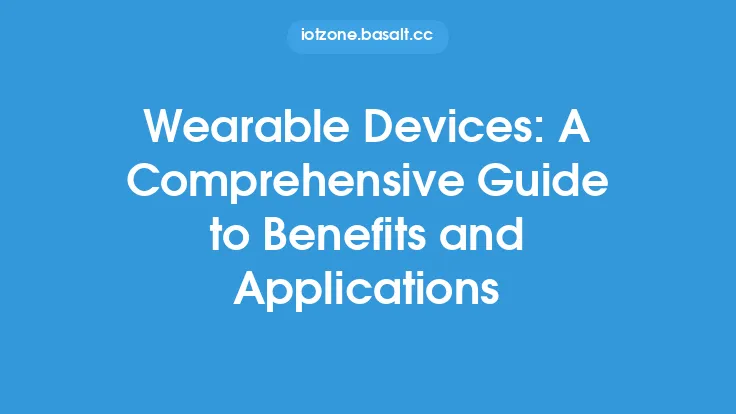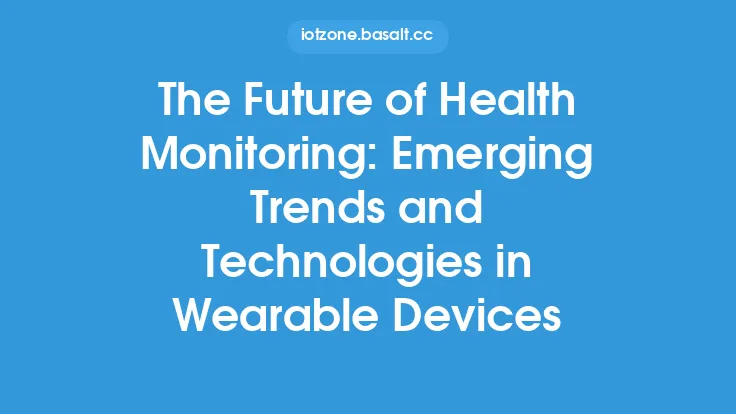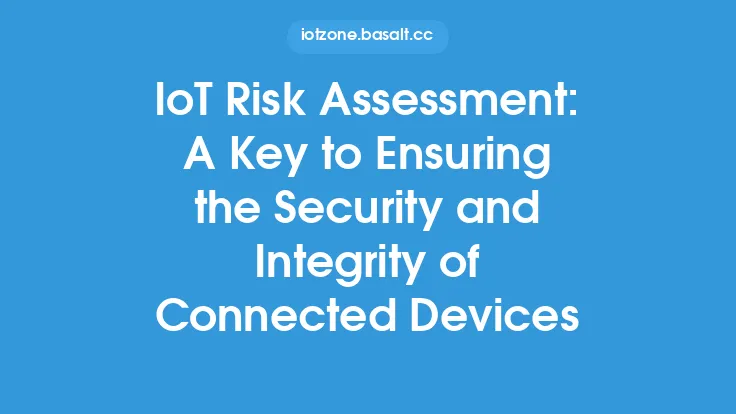The increasing popularity of wearable devices has led to a growing concern about the security and privacy of the data they collect and exchange. As these devices become more integrated into our daily lives, it is essential to ensure that the data they transmit and receive is protected from unauthorized access and misuse. In this article, we will delve into the world of wearable devices and security, exploring the potential risks and vulnerabilities associated with these devices and discussing the measures that can be taken to ensure safe and private data exchange.
Security Risks and Vulnerabilities
Wearable devices, such as smartwatches, fitness trackers, and health monitors, collect a wide range of sensitive data, including personal identifiable information, health and fitness data, and location information. This data is often transmitted to the cloud or to other devices, such as smartphones or computers, for analysis and storage. However, this transmission process can be vulnerable to interception and hacking, potentially allowing unauthorized parties to access and exploit the data. Additionally, wearable devices often have limited processing power and memory, which can make them more susceptible to malware and other types of cyber attacks.
Data Encryption and Protection
To protect the data transmitted by wearable devices, it is essential to implement robust encryption methods. Encryption algorithms, such as AES (Advanced Encryption Standard) and RSA (Rivest-Shamir-Adleman), can be used to scramble the data, making it unreadable to unauthorized parties. Additionally, wearable devices can use secure communication protocols, such as HTTPS (Hypertext Transfer Protocol Secure) and TLS (Transport Layer Security), to protect the data in transit. Furthermore, data protection techniques, such as tokenization and anonymization, can be used to mask sensitive information and prevent it from being linked to individual users.
Authentication and Authorization
Another critical aspect of wearable device security is authentication and authorization. Wearable devices often require users to create accounts and log in to access their data and features. However, if the authentication process is not secure, unauthorized parties may be able to gain access to the device and its data. To prevent this, wearable devices can use secure authentication methods, such as biometric authentication (e.g., fingerprint or facial recognition) and two-factor authentication. Additionally, authorization protocols, such as OAuth (Open Authorization), can be used to control access to the device and its data, ensuring that only authorized parties can access and manipulate the data.
Secure Software Development
The security of wearable devices also depends on the security of their software. Wearable devices often run on operating systems, such as Android Wear or watchOS, which can be vulnerable to security flaws and bugs. To mitigate this risk, wearable device manufacturers must prioritize secure software development practices, such as secure coding, code reviews, and penetration testing. Additionally, manufacturers can use secure development frameworks and libraries, such as the Android Wear Security Framework, to ensure that their devices are designed with security in mind.
User Education and Awareness
Finally, user education and awareness are critical components of wearable device security. Users must be aware of the potential security risks associated with wearable devices and take steps to protect their data and devices. This includes using strong passwords, keeping software up to date, and being cautious when connecting to public Wi-Fi networks or downloading apps. Additionally, users can use device management tools, such as remote wipe and device tracking, to protect their devices in case they are lost or stolen.
Future Directions and Challenges
As wearable devices continue to evolve and become more integrated into our daily lives, the security and privacy challenges associated with these devices will only continue to grow. Future directions for wearable device security may include the development of more advanced encryption methods, such as homomorphic encryption, and the use of artificial intelligence and machine learning to detect and prevent cyber attacks. However, there are also challenges associated with implementing these security measures, such as balancing security with usability and ensuring that security protocols do not compromise the performance and functionality of the devices.
Regulatory Frameworks and Standards
To address the security and privacy concerns associated with wearable devices, regulatory frameworks and standards are being developed. For example, the General Data Protection Regulation (GDPR) in the European Union and the Health Insurance Portability and Accountability Act (HIPAA) in the United States provide guidelines for the collection, storage, and transmission of personal data. Additionally, industry standards, such as the ISO 27001 standard for information security management, can provide a framework for wearable device manufacturers to follow when designing and implementing security protocols.
Conclusion
In conclusion, wearable devices pose a unique set of security and privacy challenges that must be addressed to ensure safe and private data exchange. By implementing robust encryption methods, secure authentication and authorization protocols, and secure software development practices, wearable device manufacturers can help protect user data and prevent cyber attacks. Additionally, user education and awareness are critical components of wearable device security, and regulatory frameworks and standards can provide a framework for manufacturers to follow. As wearable devices continue to evolve and become more integrated into our daily lives, it is essential to prioritize security and privacy to ensure that these devices can be used safely and securely.





